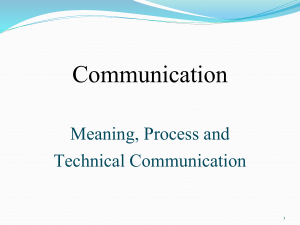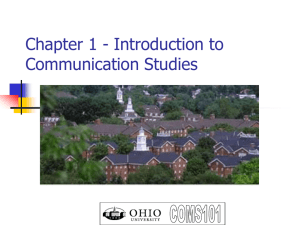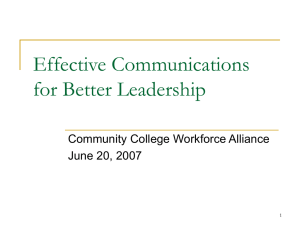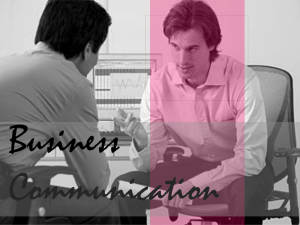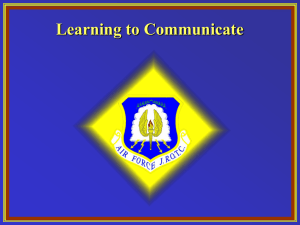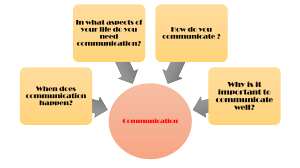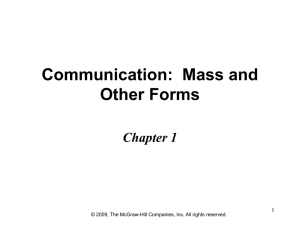Chapter 5: The Communication Process - UAH
advertisement
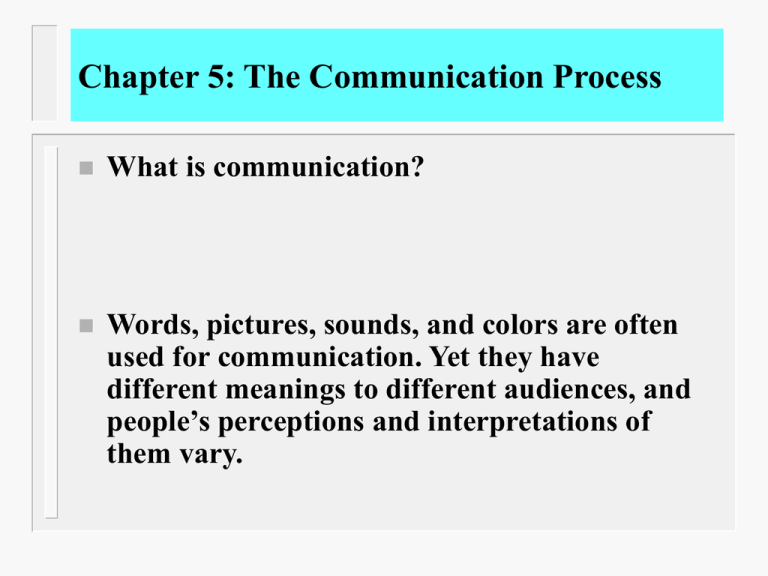
Chapter 5: The Communication Process What is communication? Words, pictures, sounds, and colors are often used for communication. Yet they have different meanings to different audiences, and people’s perceptions and interpretations of them vary. One-Way Communication Model Source/ Sender Encoding Message/ Channel Decoding Receiver Response Noise Two-Way Communication Model Encoding Message/ Channel Decoding Receiver Response Feedback Source/ Sender Noise Marketing Communication Process Pros and Cons of one-way vs. two-way communication Of the five marketing communication tools, which are one/two-way communication? Components of marketing communication - source/sender - encoding - message/channel - decoding - receiver - response/feedback - noise The Receivers Mass Markets and Audiences Market Segments One-way Mass communication Niche Markets Individual and Group Audiences Two-way Personal communication The Response Process Traditional models of the response process Stages AIDA model Hierarchy of effects model Innovation adoption model Information processing model Cognitive stage Attention Awareness Knowledge Awareness Presentation Attention Comprehension Affective stage Interest Desire Liking Preference Conviction Interest Evaluation Yielding Retention Behavior stage Action Purchase Trial Adoption Bahavior Cognitive Processing of Communications: A model of cognitive response Exposure to Ad Cognitive responses Attitudes Product/ message thoughts Brand attitudes Sourceoriented thoughts Ad execution thoughts Behavioral Intention Purchase intention At. toward Ad The Impact of Involvement on consumers’ response process Involvement: Personal relevance. But with what? Antecedents of involvement Possible impact of involvement Personal factors Needs Importance Interest Values Object or stimulus factors - Differentiation of alternatives - Source of communication - Content of communication Situational factors - Purchase/use - Occasion Elicitation of counter-arguments to ads Effectiveness of ad to induce purchase Involvement With advertisements Relative importance of the product class Perceived differences in product attributes With Products With purchase decisions Preference of a particular brand Influence of price on brand choice Amount of information search Time spent deliberating alternatives Type of decision rule used in choice Chapter 6: Source, Message, and Channel Factors The Basic Model of Communication Encoding Message/ Channel Noise Decoding Receiver Response Feedback Source/ Sender Sources Factors the person or business that is involved in the communication of a promotional message. direct source indirect source Characteristics: credibility, attractiveness, and power Source Credibility - the extent to which the receiver perceives the source to be trustful or believable. internalization Source Attractiveness Attractiveness: the extent to which the receiver identifies with the source. identification - similarity - familiarity - likeability Source Power A source has power when he or she can actually administer rewards and punish to the receiver. compliance Message Factors: Structure - the manner or framework used for structuring or communicating the information. Order of presentation (primacy effect, recency effect) Conclusion drawing Message sidedness (one-sided or two-sided) Refutation Verbal versus visual messages Message Factor: Appeal - the manner or style used to communicate the promotional message. Rational vs. Emotional Comparative advertising Fear appeals Humor appeals Channel Factors Personal vs. non-personal channels Effects of alternative mass media (e.g., self-paced vs. externally paced) Effects of context and environment (e.g., qualitative media effect) Clutter (all the non-program material that appears in the broadcast environment such as commercials, public announcements and the like).
